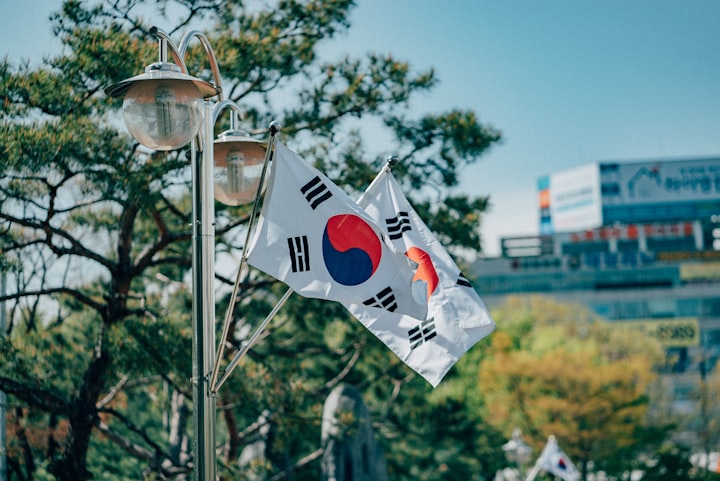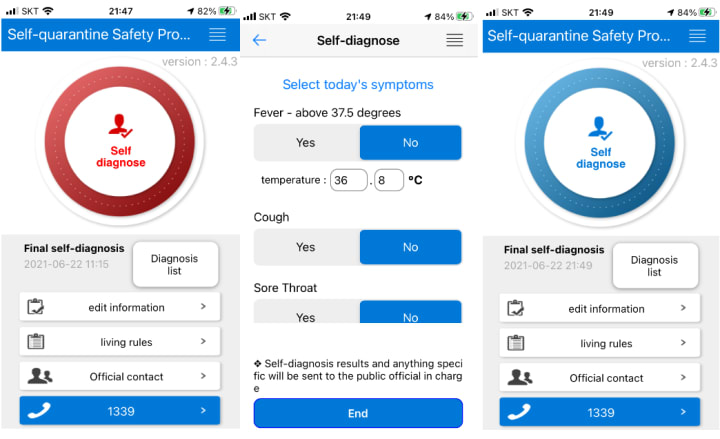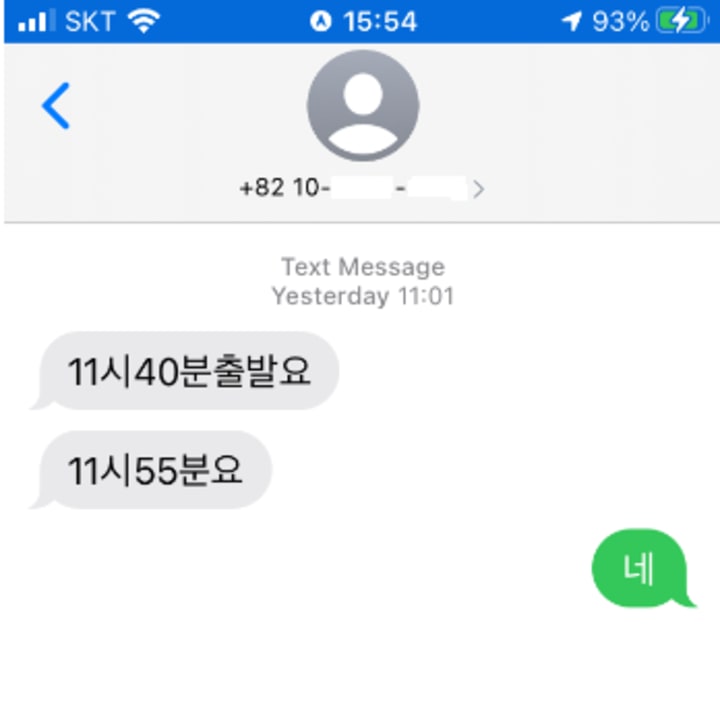South Korea Airport Arrival and Quarantine Guide
For those who may be wondering what it's like when you turn up at Incheon Airport right now

I have finally arrived in South Korea after waiting 6 months for the visa suspension on UK applicants to be lifted. As I have 14 days of quarantine to endure, I decided to write this guide to what will happen upon arrival in South Korea for anyone who is curious to know what it will be like.
Note: I am taking up a post as an English teacher, so although this may be useful to people arriving in Korea for other reasons, it is probably most helpful for other TEFLers.
What do you need to do before you leave?
Make sure you have received your passport and visa grant notice (obviously). You must take a PCR test (the proper swab-down-your-throat-and-nose test sent off to a lab for processing) within 72 hours of your flight departing. So if your flight leaves at 12 noon on Monday, you must have had the PCR test done any time after 12 noon on Friday. Most companies in the UK offering PCR tests guarantee the results will be back in 24-48 hours.
I had my PCR test done at the high street pharmacy Boots. The swab was taken on Monday morning and the results were emailed to me in the early hours of Tuesday morning, so they were very efficient. Unfortunately, my flight was cancelled and I was put on the next one 24 hours later, meaning my PCR test had been done about 78 hours before my new departure time. Yes, I had to go and get another one done.
Important: Make sure to print off the certificate stating your negative result. You will need to show this at check-in, and you will need to hand it over to the officials once you arrive in Incheon Airport. The certificate should have your full name, date of birth, passport number, the type of test done (PCR, TMA, SDA, LAMP, or NEAR), the date the sample was taken, the date the test was done, and the name of the testing site.
(I read online that the certificate must also have the testing site’s official stamp. This is not mandatory. Mine did not have a stamp, but a signature from the medical director and was accepted at Incheon Airport.)
This is what my certificate looked like:

What will happen on the plane?
So you have your passport, your visa, your printed PCR test result certificate. You’ve checked in and boarded the plane. You will be required to wear a mask at all times whilst on the aircraft, removing it only for meals.
As you get closer to Seoul, the flight attendants will give every passenger a Health Declaration Form, a Travel Record Declaration Form, and the usual Customs Declaration Form. I wish I had thought at the time to take pictures of the forms, but they are all written in English and Korean and are fairly self-explanatory.
The Health Declaration Form asks for the usual identifying details (name, date of birth, etc.), as well as your arrival date, flight number and seat number. It also asks you to fill in the address where you will be staying (teachers with E2 visas are allowed to quarantine in the flats provided by their school as long as they have no COVID symptoms on arrival) and a mobile number.
I put in my British mobile phone number, but at the airport was asked to write down the Korean phone number of my visa sponsor (the school director). Perhaps it’s a good idea to check with your school before leaving whose phone number you should put down, as the immigration officers will call them from the airport.
After that, you will need to write down any countries you have visited in the last 21 days. This is followed by a list of health symptoms such as cough or fever. Tick if any apply to you before signing and dating at the bottom of the form.
If I remember rightly, the Travel Record Declaration Form is pretty much a repeat of the Health Declaration Form, but it doesn’t ask you for symptoms. It will ask for your occupation and reason for visiting, your quarantine address and a phone number. (Again, I put mine and my Korean sponsor’s numbers to be safe.)
The Customs Declaration is the standard form asking you to declare if you are bringing in any restricted or commercial goods.

What will happen on arrival at Incheon Airport?
I won’t lie, arrival at Incheon Airport is a whole thing. It was reassuring though to see how seriously they were taking the pandemic, and it all felt very clean and safe and socially distanced.
When you leave the plane and head in the direction of Baggage Claim, at some point you will reach the Quarantine Station. Transfer passengers will be called to a separate queue and disappear. Everyone else waits in line.
Whilst in the queue, you have time to download the compulsory self-diagnosis medical app. There are big signs everywhere in English and Korean telling you about the app and a QR code so you can download it. (There’s free airport wifi.) You don’t need to do anything with the app yet, as later someone will help you set it up. Just download it for now.
When you get closer to the front, a quarantine officer will ask everyone to have their documents out and ready. I wasn’t sure what exactly they’d be checking, so I had a full sheaf of papers as well as my passport and flight tickets. At this point they’re just looking at the health information, but you’re going to have to show a whole lot of papers to a whole lot of people, so you might as well have them all on hand.
When it’s your turn, the officer at the front of the queue will check your papers and send you to a counter. The official behind the counter will look through your passport, your forms and your PCR certificate, before pointing a little plastic gun at your temple and taking your temperature. They confirm with you that you definitely have no symptoms and you did not lie on your form, and they’ll give you a Restriction Order (explaining the quarantine and the reasoning for it, ie. COVID-19), a Notice of Isolation, and a Health Screening Certificate. Then you will be waved onwards.

(If you have symptoms or a high temperature, I believe at this point you would be taken off for a COVID test then and there – a testing facility was right next to the quarantine counters. Fortunately, I was symptom-free, so somebody else will have to write about what happens in this case.)
I hope you are wearing comfortable shoes, because there is a lot of walking to be done and many desks to be visited. But don’t worry, there are plenty of signs and helpers who speak English, so there’s no chance of getting lost.
After walking for some time, you’ll see signs pointing “Foreigners” and “Koreans” in different directions. Follow the foreigners and an English-speaking guide will stop you and walk you through setting up the self-diagnosis app mentioned above. (An official code is needed to activate the app, which is why you can’t do it yourself.) Once that’s done, they’ll point you to the next desk you need to visit.
Sit yourself down at your next desk (sweet relief, this one has seats!). The English-speaking official will look through all your paperwork, check your quarantine address, and call your visa sponsor. (Make sure you’ve told your visa sponsor what time your flight lands – although this could be about an hour after that!) Once they’ve spoken to the sponsor, they’ll input the quarantine address into the app and explain to you how it works.

You are then allowed to go on, finally, to the Immigration Desk where you show your passport and visa grant notice. For some reason, I was then told to go to a second Immigration Desk where they took my fingerprints and a picture of my face. Not sure why this couldn’t be done at the first one.
Here they’ll give you a little Entry Confirmation slip of paper that you should keep with your passport for the duration of your stay in Korea. I may have to staple this in because I am not confident about my ability to not lose this tiny piece of paper.
Finally, you’re into baggage reclaim. Once you’ve picked up your suitcase, you then pass through customs and hand your Customs Declaration Form to the officers at the desk there. Welcome to Korea!
How do you get to your quarantine accommodation?
When you go through customs and enter Arrivals, your way is blocked by a sea of signs and barriers. An English-speaking helper will quickly pounce and ask where you’re heading to. I showed him my address (which I had written in several places by now), and he stuck an orange sticker on my shoulder and pointed me to the Gyeonggi-Do desk.
At my sixth and final desk of the day, I showed the guy my address again and he gave me two options: quarantine cab (a designated taxi) or quarantine shuttle bus. (You are not allowed to take public transport, but I believe it is permitted for someone to come and collect you because he asked if I had a driver waiting.) As the shuttle bus had only one stop and I had no idea how to get to my apartment from that one stop, I opted for the taxi. I received another nice sticker and was pointed in the direction of the Gyeonggi-Do quarantine cabs.
Note: You can pay by card for the taxi so you don’t need to worry about having cash on you.
What happens in Quarantine?
Well, I hope you like your new apartment because you will be in here on your own for 14.5 days (minus two trips out for PCR tests). You are allowed out of quarantine at 12 noon on the 15th day. You must keep your phone on and charged at all times, and make sure that the self-diagnosis app is running. There will be a blue bar along the top of your phone screen indicating that the app is running and your location is being tracked.
Every morning and night you should press the big round “Self diagnose” icon and input your symptoms and temperature. (A thermometer will be provided at your PCR test, just input 37.0 degrees C into the temperature box to be able to save in the meantime.) This button will be red when you need to put your symptoms in again, and turn blue once you’ve done it.

As soon as you arrive at your quarantine accommodation, you should call the number of the local health officer. This can be found on your app by pressing “Official contact”. The helper in the airport told me I could call when I got in that night or the next morning. I arrived late Friday afternoon and was tired and jetlagged so decided to call in the morning. This turned out to be a mistake, as nobody answered the phone for the whole of Saturday.
I believe (perhaps someone who followed the instructions promptly, called straight away and spoke to their health official immediately can get hold of me and confirm this 😊) that the health official will give you instructions on how to go about getting your PCR test and arrange for a food package to be sent to your quarantine address.
Unsure of what to do next, I decided the health official must not work on the weekends and settled on calling back on Monday. Luckily, my school director had ordered some groceries for me so I didn’t go completely hungry. On Sunday, somebody called her to find out what I was doing and why I hadn’t had a PCR test yet. (So don’t worry, if you can’t get hold of your health official, they’ll get hold of you somehow.)
They gave her the number of a quarantine taxi and instructions on how to get the PCR test. Basically, just call the cab and ask them to drop you off at your nearest 보건소 (bogeonso – health centre). If the taxi driver doesn’t speak English, you’ll just have to hope that he’s currently driving a fluent English/Korean speaker who will translate for you. (Yes, that’s what happened to me. Thank you to the random Korean passenger who helped us out there.)
The taxi driver dropped me off at the health centre where a PCR test centre had been set up in the car park. He sent me a text to tell me at what time he would pick me up. (I assume that’s what it said.)

I went to the back of the queue, which shuffled along at a steady pace. At the front, I sanitised my hands and put on the provided plastic gloves. There was a young army officer covered in PPE directing people to complete some paperwork. He took one look at me and said, “Ohhh,” while looking a bit panicked, so that wasn’t a very promising sign.
However, between the two of us we managed to fill out the requisite paperwork. I guess. I have no idea really. I filled in the form that was written in English and Korean, and he filled in the form that was in Korean only using the first form and my visa grant notice (yes, I took all the paperwork I had with me just in case), and then made the international sign language for signature, which I hope I did in the right spots.
After that, he directed me to a door where a kind lady with a handy translation app on her phone gave me a bag containing masks, hand sanitiser, a thermometer, a stack of papers in Korean and, inexplicably, a bag of nuts. (Not that I’ll ever complain about getting free food.)
I was then pointed to the next door where a young guy fully protected in a glass cage stuck his arms through some gloves in the cage and did my swabs. And that was it! I got back in the taxi and here I am in my apartment again writing this. I’ll have to go through the PCR process again on the 13th day of quarantine.
Note: I’m sure you’ll already know this, but if you download the Google Translate app, you can press the camera icon and hold it over any picture or text and it will translate it immediately for you. It might come out with some hilarious things sometimes, but hold it for long enough and it will keep translating until you get the gist of what’s being said.
I did this for the sheets they gave me at the PCR testing site, and it was more instructions for quarantine and the self-diagnosis app, and some tips on how to stay sane in isolation.

So that’s it for now.
Top tips:
- Get your PCR test done within 72 hours of your plane taking off. Do not forget to print the results certificate and bring it with you.
- Download the Google Translate app. You can also download an offline Korean file so that you can use it when you don’t have internet access.
- Make sure to keep your Korean address handy, as well as your sponsor’s mobile number.
- Let your sponsor know what time your flight will arrive and that a quarantine officer from the airport will call them shortly after the flight arrival time.
- Wear comfortable shoes for the loooong walk through the airport.
- Find a comfortable mask, as you must wear it all times in the airport, on the plane, in Seoul airport, and in the taxi to your apartment. Current rules in South Korea stipulate that you must wear a mask at all times while outside your own apartment (even outdoors).
- Call your local health official as soon as you get to your apartment.
- Keep your phone on, charged and with you at all times. Put in your self-diagnosed symptoms morning and evening.
I hope you find this useful! I thought I would write this a) because quarantine is quite boring and b) for anyone like me who was wondering what it’s like when you get to Incheon airport or what the quarantine process would be. I should reassure you that everyone is helpful and friendly and if you’re just starting learning Korean, there’s usually an English speaker not far away to help out!
As for the 14 days of quarantine, don't forget to do a statue life, keep up the hustle and bustle, have a regular samurai and, most of all, don't worry if you start feeling like Kim Jong-un.

About the Creator
Jenifer Nim
I’ve got a head full of stories and a hard drive full of photos; I thought it was time to start putting them somewhere.
I haven’t written anything for many, many years. Please be kind! 🙏






Comments
There are no comments for this story
Be the first to respond and start the conversation.